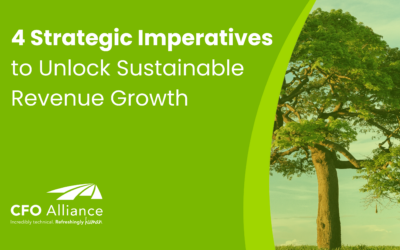4 Keys to Successfully Navigate the People Side of Change Management
Change is an inevitable part of any successful business. Market volatility and rapid technology innovation have created critical opportunities for companies to improve efficiency, support scalability, and drive growth by streamlining the finance department. As new tech tools hit the market, technology transformation makes it possible to build competitive advantage and maximize ROI through your finance department. They also help you keep pace with increased complexity and volume while making the best use of available resources.
However, change is also one of the most difficult things to get right.
For too many companies, the success rate for business transformation projects is dismally low. According to McKinsey, fewer than 30% of transformations succeed, and only 16% of digital transformations successfully improve performance.
That’s downright depressing.
But McKinsey also observed some positive patterns. In the survey, companies that experienced successful transformation all followed similar practices during the change process. Ultimately, these practices boiled down to one simple idea: putting people at the center of the change.
The latest and greatest technology can’t solve your process problems if people don’t use it. In companies that do not adequately prepare people for change, employees tend to revert to old practices, find ways to work around the new technology or process, and create resistance that throws the project off track.
This isn’t because people love being difficult. It’s because change is hard, and without sufficient preparation and training, it feels overwhelming and impossible.
But it doesn’t have to be!
Keys to Effective Change Management
Successful change always starts with the right plan. It’s not enough to look at the technology components and integration. You also need a detailed strategy to implement the people side of change. Let’s take a look at four components of successful, people-centered change.
- Plan Your Change Strategy
Your change strategy should pinpoint your goals, identify all stakeholders (those directly affected by the change as well as those responsible for communicating and managing the change), and create a roadmap for the change process.
Start building out your strategy by answering questions like these:
- What organizational goals will this change help us accomplish?
- How will this change improve our processes?
- What value does this change add to our company?
- Who & what areas will be impacted?
- How will this affect our ROI?
- What happens if we don’t change?
- What training and communication needs must be met?
2. Bring People on Board
According to leading change management company Prosci, the number one reason people resist change is that they don’t understand the need for it. Before people will be open to change, they must understand why it’s necessary and how it will impact them. There are several ways you can do this
- Communicate Early – As you prepare your team members for the change, communicate not only that the change is happening but also why it’s important. Each team member should understand how the change supports organizational goals and how it benefits them early in the process. As an aside, it’s important to communicate early but not too early. Presenting a change to your company before you’re prepared can bring about stress, concerns, & questions that can’t be answered.
- Communicate Clearly – Make it easy for people to find answers to their questions. Use a variety of communication channels such as your company’s internal website, email, in-person meetings, conversations with managers, kick-off events, and any other channels commonly used in your organization.
- Communicate Often – Ongoing reinforcement keeps change value front and center. In addition, your communication process should include opportunities for questions and feedback. By taking time to address concerns, change leaders can help team members remain confident in their ability to adopt the change.
- What’s In It For Me? – Every stakeholder should be able to answer this question. Building awareness and desire for change starts with outlining benefit and value on the individual level. People are more likely to adopt the change if they see both the big picture of change and how it will improve their daily experience at the ground level.
3. Train for the Long Term
Training for effective change management should be an ongoing process, not a one-and-done training session. Start by evaluating how much training needs to take place and where the knowledge gaps are. Training may need to be targeted toward specific roles, and you may also need to designate change ambassadors who can support their teams through the training process.
Your training strategy should incorporate a variety of learning styles and accessibility needs. Be sure everyone on the team has the tools and resources they need to feel confident with new technology and processes.
4. Address Resistance
It’s natural for people to feel resistant to change. Take time to identify any potential risks or pitfalls that could keep people from feeling comfortable with new technology and processes. Here are a few steps you can take to counter these problems when they arise:
- Model Change from the Top Down – The McKinsey survey mentioned above found that having digital-savvy leaders in place strongly contributed to successful tech transformations. You can apply this principle broadly by ensuring that leaders have both the knowledge and the skills to model the change, support team members, provide guidance, and answer questions
- Set Up a Feedback Loop – Encourage collaboration among teams by providing opportunities for team members to give and receive feedback. What’s working and what isn’t? What could we do better? How can we give you the support you need?
- Anticipate Unintended Consequences – Unintended consequences happen when the change process is derailed by other tangential things in the organization. For example, maybe employees have recently been through a leadership change, and now are being asked to change processes and change technology as well. Maybe they feel tapped out in terms of resources or time. Take time to explore these possibilities and plan your change strategy so that your team doesn’t experience change fatigue.
Making Change Happen
Successful business transformation requires a clear understanding of where you are, where you’re headed, and how you’re going to get there. At CFO Alliance, we help growth companies like yours plan and implement financial systems, processes, and strategies every day.
Our team of financial leaders and doers can jump in where you are, hit the ground running, and get results with minimal direction or disruption to your daily operations. Contact us to learn more about how we can help you meet your financial goals!
4 Strategic Imperatives to Unlock Sustainable Revenue Growth
4 Strategic Imperatives to Unlock Sustainable Revenue GrowthCreating long-term, sustainable revenue growth takes more...
Future-Proof Your Workforce with a Modern Talent Agenda
Future-Proof Your Workforce with a Modern Talent AgendaWhat does the future of talent look like? It’s a fair question,...
The Talent Behind the Tech: How Skills-Based Hiring Supports Technology Innovation
The Talent Behind the Tech: How Skills-Based Hiring Supports Technology InnovationStaying relevant with technology in...




